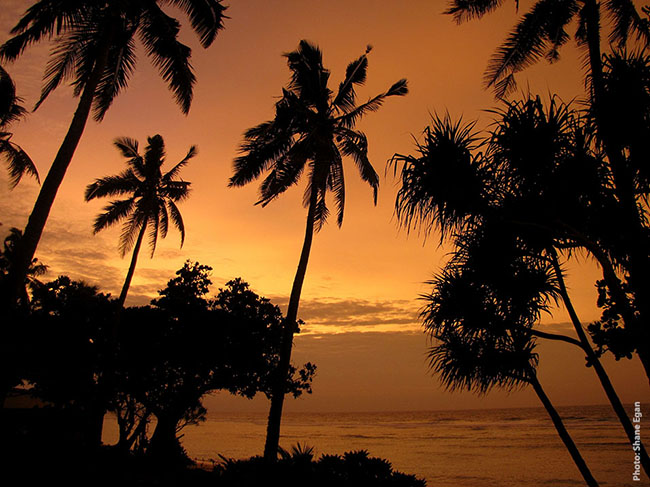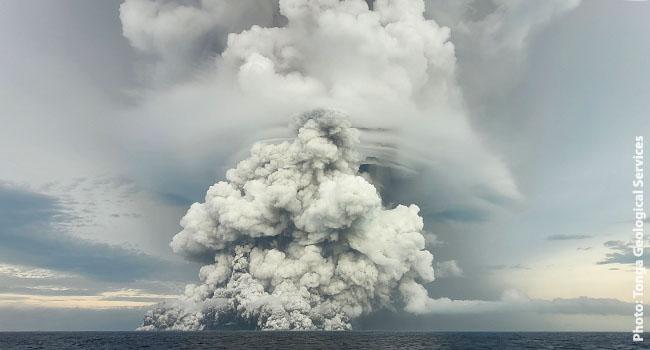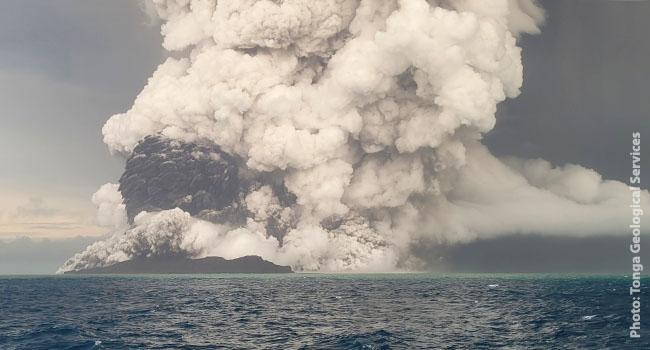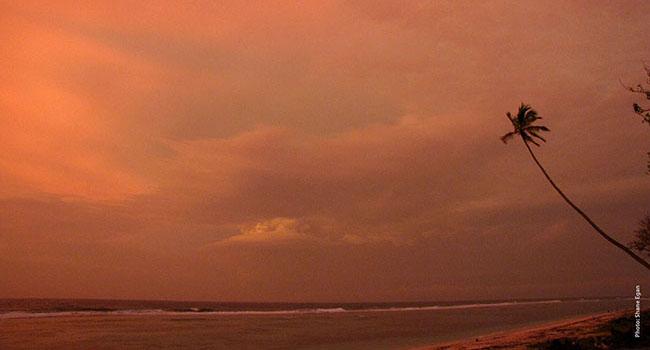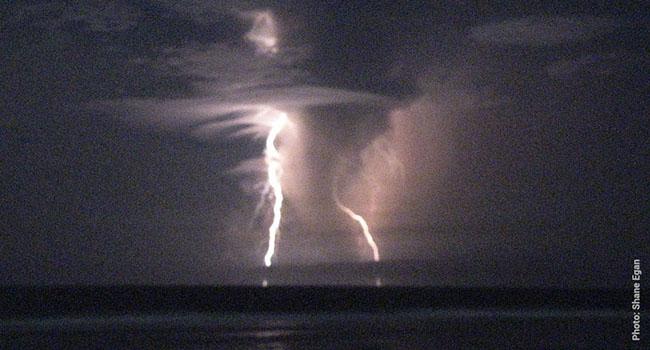Massive explosions, thundering lightning, greet observer team, working 3.2km off Hunga Tonga Hunga Ha'apai eruption on Friday. Photos by Taaniela Kula and others.
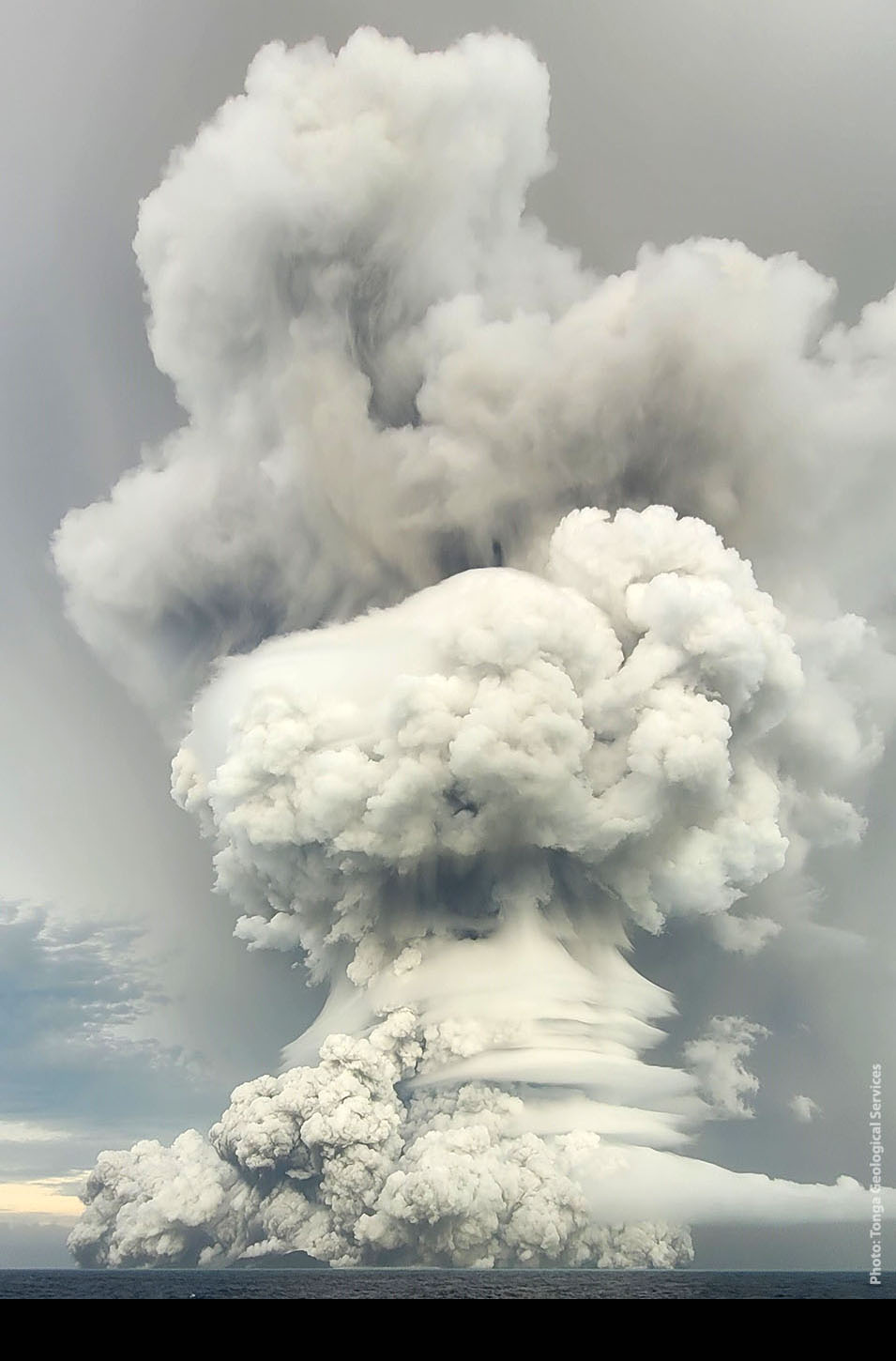
By Mary Lyn Fonua
A team of Tongan geologists who went out to observe the Jan. 14 eruption of the Hunga Tonga Hunga Ha'apai volcano witnessed spectacular explosions on the dangerous mission on Friday afternoon.
“Yesterday there were massive explosives, thundering lightning within two miles away, we observed and recorded,” said Taaniela Kula, Deputy Secretary, Ministry of Lands & Natural Resources, who led the team
“Big day yesterday indeed!. It was great getting out there during the volcano's peak hours. It's a geologist's dream to see actual geological events in process,” he told Matangi Tonga.
Others from the TGS included Valeliano Tovi, 'Ana Maea Tupou, Folauhola Latu'ila, Nikolasi Heni, with the Tongan Navy crew from HMAF.
Observations from the base team continued overnight.
TGS reported this morning that observations from satellite images between 5:10pm and 11:30pm showed that the eruption is continuous, maintaining a 5km wide column plume of ash, steam and gas rising to altitude 18-20km above sea level.
“The plume expands radially up to a radius of 240km from the volcano, passing over Tongatapu, ‘Eua, Ha’apai and Vava’u group. At 10:30 pm the plume had declined to altitude 18km above sea level.”
All domestic flights in Tonga were cancelled for today, Saturday, due to the active volcano, which is located 65 kms north of the capital.
Sea level back to normal
At 10:00am this morning Saturday, the National Tsunami Warning Centre cancelled the tsunami marine warning for Tongatapu, Ha'apai and southern Tonga .
Based on the observation data recorded from the tide gauge at Nuku’alofa, it indicated that the state of the sea level is back to normal. The fluctuation of the sea level recorded in the tide gauge at Nuku’alofa was below 10cm over the past six hours (up to 10:am Saturday).
Viewed from space
The Hunga eruption began early on Jan.14 between 4:20-4:30am local time and was captured by weather satellites.
A dramatic animation of the pulsating eruption as it continued through the day was published by the Space Science Centre at the University of Wisconsin-Madison in the United States using data captured by the GOES-17 satellite. It shows how the volcanic plume rose rapidly, and with enormous energy spreading clouds of ash and dust across Tonga.
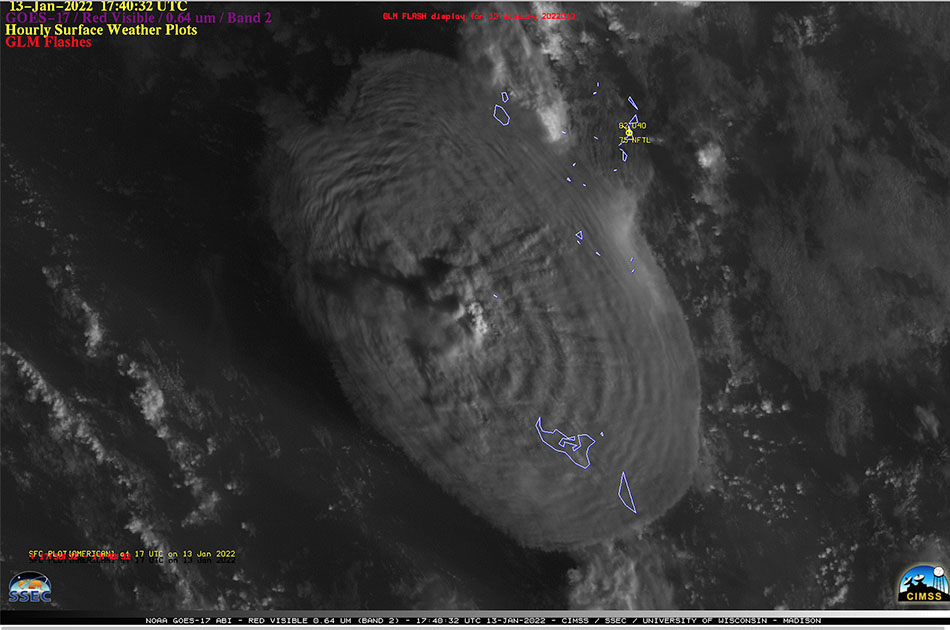
Pictured above, Hunga eruption captured by the GOES-17 satellite (NOAA) at 6:40am Jan. 14, 2022, Tonga local time, shows the extent of the explosion that pushed the plume over 16km above sea level. Tonga's coastline is outlined in blue. An animation of GOES-17 visible imagery, (courtesy Scott Bachmeier, CIMSS) shows the evolution of the pulsing eruption throughout the day on Jan. 14 local time (Jan. 13 UTC).
Photographed from the sea level yesterday afternoon by the Tonga Geological Services team, the volcano continued to demonstrate its powerful forces.
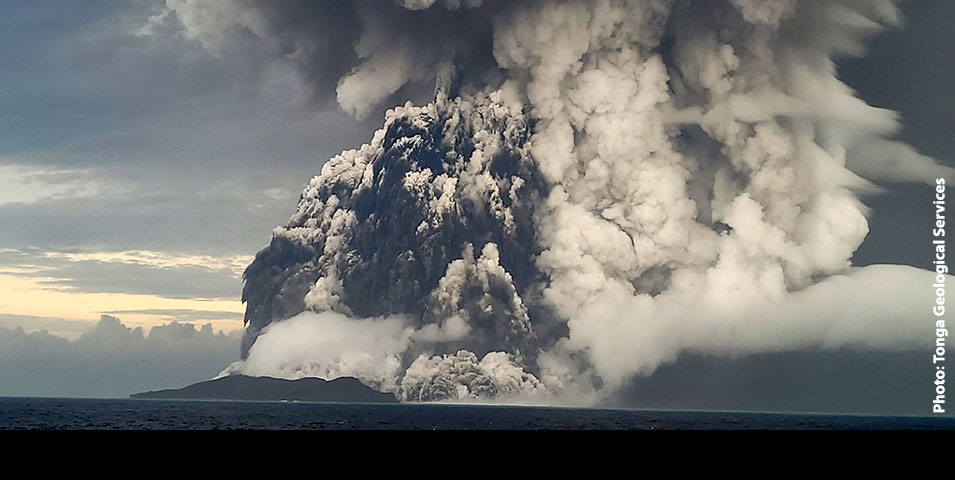
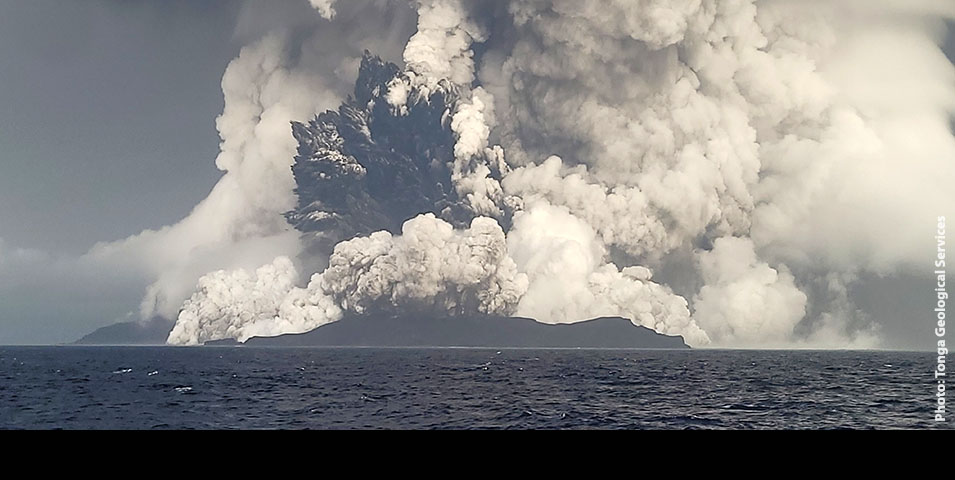
The smell of sulphur was experienced over Tongatapu and Ha'apai and government offices closed for the day after a tsunami warning was issued.
TGS said today that ashfall was reported yesterday in Mango and Fonoi Islands of Ha’apai and impacting the rainwater tanks.
“Sometimes volcanic ash in the atmosphere is not visible but stinging on the eyes or irritation are signs. If dark coloured particles are observed on outdoor surfaces at a large scale, it may also be a sign of ashfall. It is advised to stay indoors and to protect your rainwater harvestings. Please ensure to cover your water reservoirs. If one feels short of breath please wear a mask to reduce inhalation of ash from the air,” they warned.
“Strange oceans and nearshore turbulence were seen in the shores of Ha’apai and Tongatapu islands. These are caused by the volcanic eruption and these dynamic currents can cause chaos if one tries to sail or swim in it. It is advised that the public stay out of the water until the volcanic eruption until further notice,” TGS said. They asked the Tongan public to remain vigilant. “Please advise local authorities if abnormal activities continue to occur or contact 7401331.”
